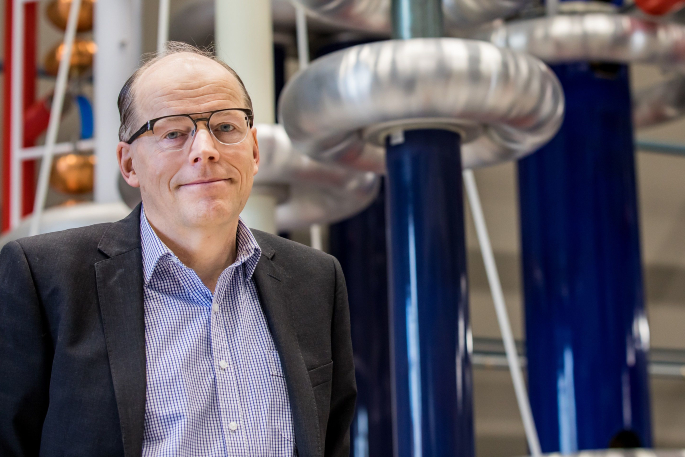University of Canterbury Professor Neville Watson is two years into leading a seven-year project to integrate renewable energy into Aotearoa New Zealand's century-old electrical grid.
The project aims to turn the country's power grid into an optimum system for Aotearoa New Zealand's needs by 2050.
Working closely with researchers from local and international universities and industry collaborators to share knowledge and lessons learnt, Professor Watson says the importance of the project is increasing.
'It is important because the power grid is changing in its nature. There is a rapid deployment of new technology that is converter based, such as electric vehicles, battery storage systems, and solar PV generation. Wind turbines for instance generate variable speed AC that is converted to DC and then converted back to AC to connect to the grid.”
These DC/AC conversions are needed because our existing system is AC. The proposed hybrid grid will reduce the number of conversion stages needed, meaning greater efficiency and fewer things that can go wrong.
'A hybrid system will give us the best of both worlds. It makes integration of these new technologies easy because they are DC and plug into the DC part of the network, but we can still use the AC transformation to ensure optimum voltage.”
'If you look at your home, appliances like your heat-pump, fridge, washing machine and clothes dryer convert AC to DC. This is because there are a lot of efficiencies in variable frequencies going into a motored driver compressor rather than a more traditional on/off cycle.
'Also almost all new appliance technology uses DC internally. Basically, feeding with DC means there is less componentry that can fail and lower losses. It removes the AC/DC conversion loss as well as reduces conveyance losses as DC transmission is more efficient than AC,” says Professor Watson.
The project includes a proposed expanded meshed High Voltage DC (HVDC) grid to enable the transport of high volumes of power to other areas of the country. Currently only a point-to-point link from Benmore in the South Island to Haywards (near Wellington) has this ability.
Professor Watson says this could become more vital if Tiwai Aluminium smelter in Southland reduces consumption or shuts down, which would release a massive amount of power generation from the lower South Island for redistribution to other parts of the country.
The project, Architecture of the Future Low Carbon, Resilient, Electrical Power System, or FAN, Future Architecture of the Network, received $13.3million over seven years from the Ministry of Business, Innovation and Employment (MBIE) in 2020 as part of the Strategic Science Investment Fund (SSIF) Advanced Energy Technology Platform Research Programmes.
The programme is split into five workstreams; network architecture, topology, converters and enabling technologies, transition paths, and Vision Mātauranga.
- Network Architecture: Investigates what the optimal structure of the future hybrid AC/DC system is and how much of the system should be DC.
- Topology: Looks at the structure of the circuits and what is needed for them to function correctly in an AC/DC environment.
- Converters and enabling technologies: Investigating what building blocks are needed for the new system. For example the types of converters, control algorithms, DC breakers, and new devices to be used in these building blocks.
- Transition path: Looks at how the present system can be transformed into the new hybrid AC/DC system and how much of the AC components, such as cables and overhead lines, can be repurposed for DC and what are the operational limits.
- Vision Mātauranga: This workstream contributes to the other four workstreams – partnering with Māori communities to share knowledge, build capability, understanding and interest in all aspects of the project and inform outcomes.
'If we don't do anything, in future we will be using band-aid solutions to address problems as they occur, such as system constraints, equipment malfunction and premature component failure,” says Professor Watson.
'This will result in a sub-optimal system. We need to be working on cohesive and enabling solutions for achieving low emissions, for which electricity will be our primary energy medium.”



0 comments
Leave a Comment
You must be logged in to make a comment.